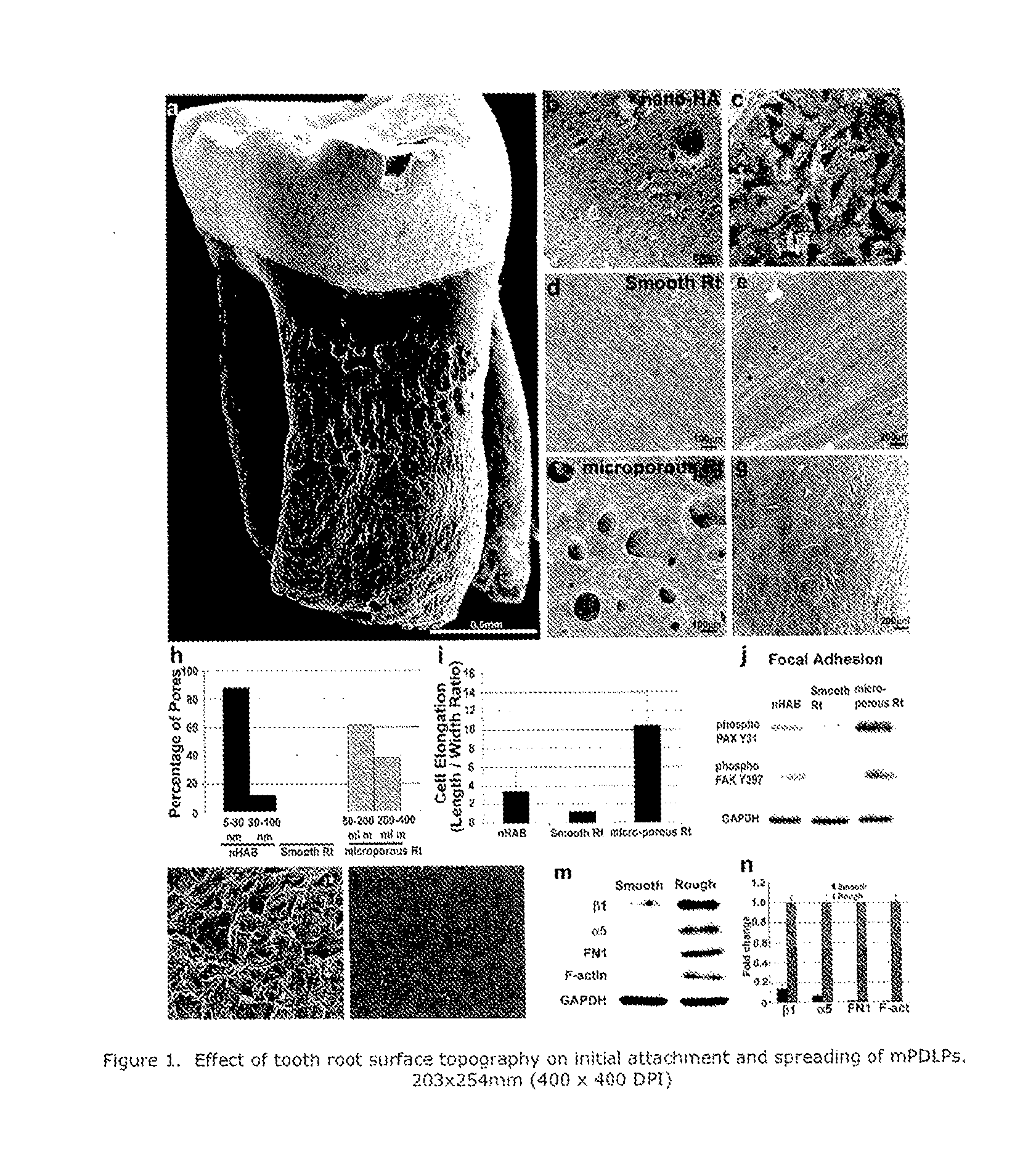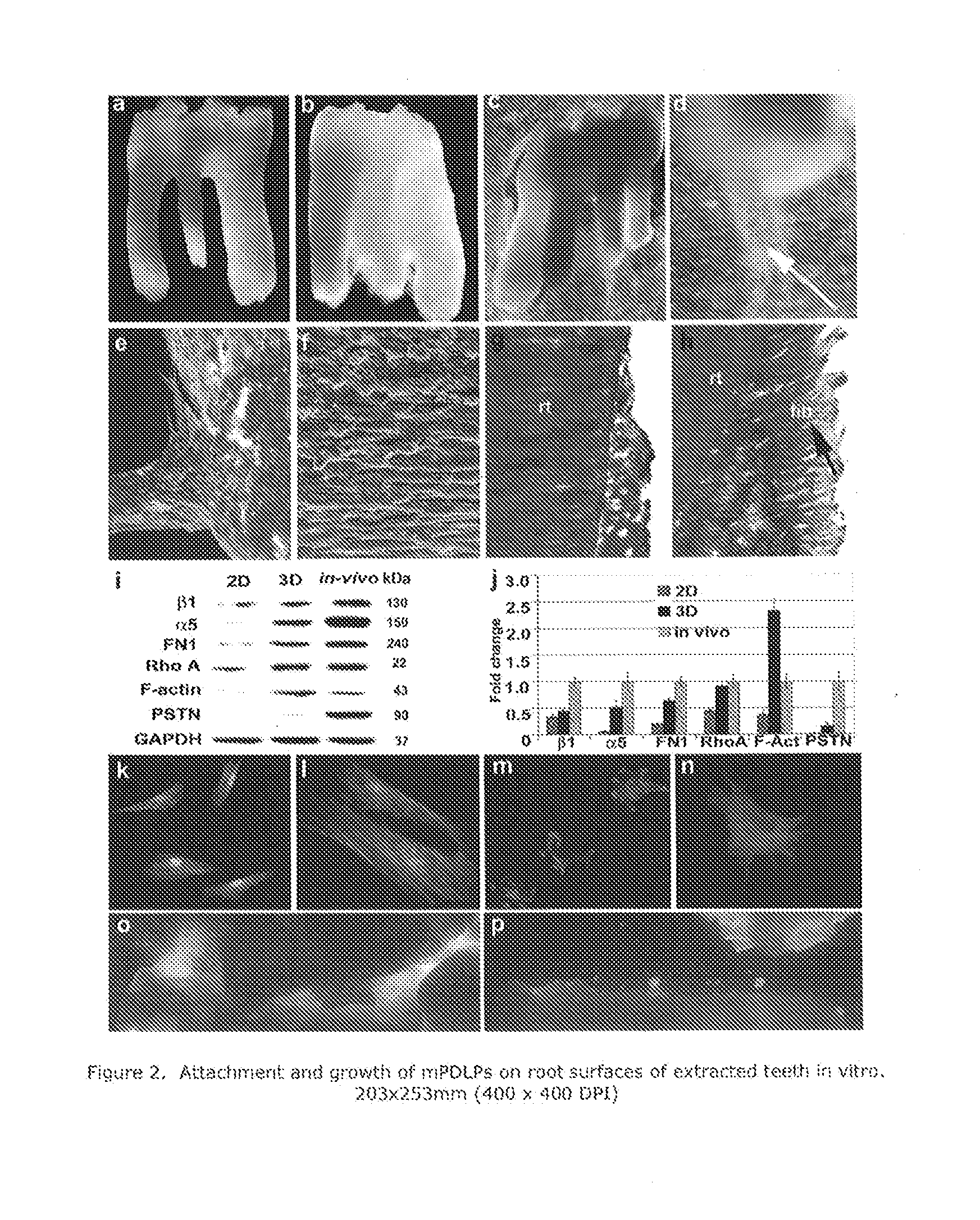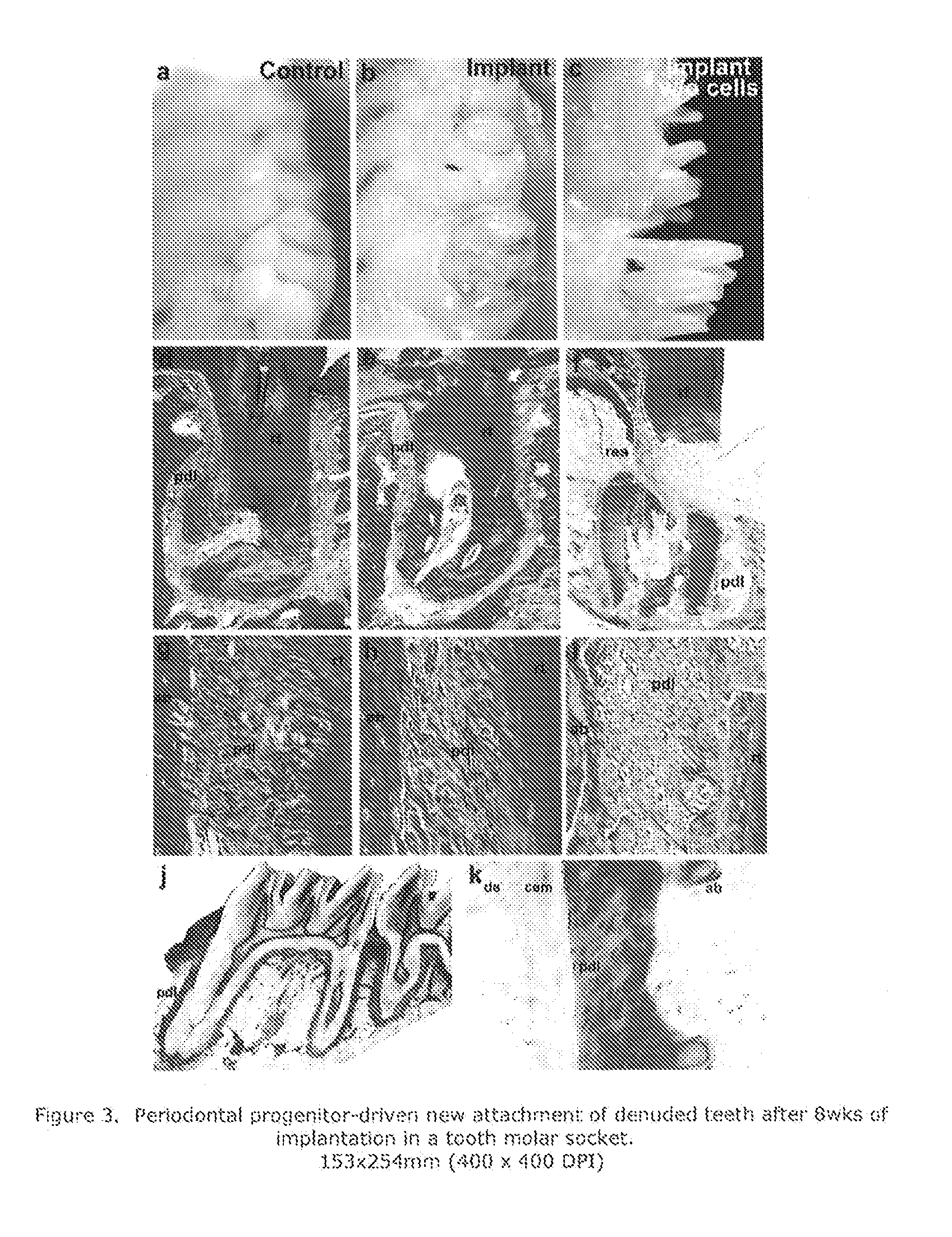Reagents and methods for preparing teeth for implantation
a technology of reimplantation and reagents, which is applied in the field of reagents and methods for promoting reimplantation of teeth into animals, can solve the problems of limiting the access to care for affluent populations, high cost of dental implants, and periodontal disease and tooth loss, so as to reduce the cost of dental implants and reduce the risk of occlusal stress. , the effect of less costly materials
- Summary
- Abstract
- Description
- Claims
- Application Information
AI Technical Summary
Benefits of technology
Problems solved by technology
Method used
Image
Examples
example 1
Natural Tooth Rool Surfaces are Microporous
[0058]Fully developed rodent molar tooth root features an intriguing surface structure of microporosities, ridges, and impressions (shown by SEM in FIG. IA). Further analysis of a native rat molar root surface compared with nano-patterned hydroxyapatite (nHAB) (the latter shown by SEM in FIG. IB) and an artificially smoothened root surface (shown in FIG. ID) revealed pores having a diameter of between 50-400 microns on native root surfaces, while artificially smoothened root surfaces did not contain measurable pores and nano-patterned apatite contained pores from 5-100 nm in diameter (comparison of pore sizes visualized for each source as set forth above using SEM and shown in FIGS. IB, 1D, 1F and 1H). In order to test the effect of surface pattern on cell behavior, mouse PDL progenitor cells (mPDLPs) were cultured as described above on the aforementioned apatite surfaces for six hours and cell dimensions were evaluated thereafter. Followin...
example 2
Apatite Surface Morphology Alters Cell Shape and Early Response Gene Expression
[0059]Based on the observed relationship between surface topography and cell adhesion behavior as shown in Example 1, it was likely that expression of early focal adhesion mediators was affected by surface properties. In order to demonstrate this effect of surface topography on cell adhesion machinery in periodontal progenitors, mPDLP cells were incubated on different apatite surfaces for six hours. In a first set of experiments, the effect of surface parameters on two early focal adhesion proteins involved in mediating cellextracellular matrix contacts, paxillin (PAX) and focal adhesion kinase (FAK) (Berrier et al., 2008, Biochem. Biophys. Res. Commun. 368: 62) was assessed. Compared to PDL progenitor cells cultured on nano-patterned hydroxyapatite, mPDLPs on microporous natural root surfaces featured an 8.8-fold increase in phospho-PAX Y31 and a 6.2-fold increase in phospho-FAK Y397. In contrast, phosph...
example 3
De-Cellularized Root Surfaces Induce Periodontal Progenitor Polarization via Integrin Signaling Pathways
[0060]Based on the conduciveness of natural tooth root surfaces to trigger cellular elongation and expression of molecular adhesion mediators as demonstrated above, it was determine that de-cellularized and denuded surfaces of extracted teeth provide a suitable microenvironment to stimulate attachment and tissue-specific growth of periodontal progenitor cell populations. Periodontal ligament progenitor cells (mPDLPs) were grown on denuded tooth roots in vitro for either four or ten days, and newly formed tissues were evaluated using scanning electron microscopy and histology as described above. After four days, mPDLPs formed a dense population of cells surrounding the incubated tooth root (shownh by light microscopy in FIG. 2A through 2D). After ten days of incubation, the root surface was immersed into a dense lawn of cells and fibers (shown in FIGS. 2E, 2F and 2H). Histological ...
PUM
| Property | Measurement | Unit |
|---|---|---|
| Structure | aaaaa | aaaaa |
| Pharmaceutically acceptable | aaaaa | aaaaa |
| Surface structure | aaaaa | aaaaa |
Abstract
Description
Claims
Application Information
 Login to View More
Login to View More - R&D
- Intellectual Property
- Life Sciences
- Materials
- Tech Scout
- Unparalleled Data Quality
- Higher Quality Content
- 60% Fewer Hallucinations
Browse by: Latest US Patents, China's latest patents, Technical Efficacy Thesaurus, Application Domain, Technology Topic, Popular Technical Reports.
© 2025 PatSnap. All rights reserved.Legal|Privacy policy|Modern Slavery Act Transparency Statement|Sitemap|About US| Contact US: help@patsnap.com



